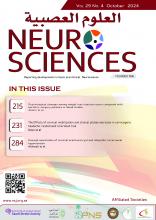To the Editor
We have read with interest Alsaqobi et al’s1 article about a 41-year-old man with SARS-CoV-2 infection complicated by acute respiratory distress syndrome (ARDS) requiring extracorporeal membrane oxygenation (ECMO) and mechanical ventilation. After weaning from mechanical ventilation, the patient presented with quadruparesis and sensory disturbances on the ventral side of both lower limbs.1 Critical neuropathy was diagnosed, but bilateral femoral neuropathy was also suspected due to weakness of hip flexion (M2 right, M1 left), nerve conduction studies (NCS) and a history of psoas hematoma during ICU stay.1 At one-year follow-up, the patient still required a walking aid.1 The study is excellent, but some points should be discussed.
The first point is that the diagnosis of psoas hematoma is not convincing.1 Bleeding on computed tomography (CT) usually shows up as hyperdensity. However, in Figure 1, no hyperdensity is seen in the cross-section of the psoas.1 In particular, no hematoma is visible at the arrowheads in Figure 1.1 In Figure 2, there is also no convincing hyperdensity at the site pointed to by the arrows.1 Therefore, the diagnosis of psoas hematoma remains unsupported. Has an MRI of the lumbar spine and para-spinal and pelvic muscles been performed?
The second point is that the diagnosis of femoral nerve neuropathy in addition to a critically ill neuropathy is also uncertain. The patient showed not only weakness in knee extension (M2), but also weak knee flexion (M2).1 As the knee extensors and flexors were affected to the same extent, it is very likely that the sciatic nerve was affected to the same extent as the femoral nerve by the critically ill neuropathy. Since the weakness of the knee extensors was similar to that of the knee flexors, it is quite unlikely that the femoral nerve was additionally damaged by the psoas hematoma. One would expect a more pronounced weakness of the hip flexors and knee extensors if the femoral nerve was additionally damaged by the psoas hematoma.
The third point is that the sensory disturbance on the ventral side of the lower extremity does not follow the distribution of the femoral nerve or the tibial nerve. How can this atypical distribution of sensory deficits be explained?
The fourth point is that the patient was referred to the rehabilitation department at the earliest three months after discharge.1 It is incomprehensible why a patient with quadruparesis is referred for rehabilitation with a delay of three months due to a suspected critical neuropathy. What was the reason for not starting rehabilitation earlier?
In conclusion, it can be said that this interesting study has limitations that relativize the results and their interpretation. Addressing these limitations could strengthen the conclusions and reinforce the message of the study. If a motor nerve is damaged by 2 pathologies (critically ill neuropathy and compression neuropathy), one would expect more severe damage to that nerve affected by both critically ill neuropathy and entrapment syndrome than if it is only affected by critically ill neuropathy.
Reply from the Author
We would like to thank Zarrouk et al for their correspondence on our article “More than what meets the eye in COVID-19 critical illness: A case report of bilateral femoral neuropathy due to psoas hematomas”.1 We value your feedback and are happy to answer your concerns
Blood may be hyperdense, isodense or hypodense on CT depending on whether the bleeding was acute, subacute, or chronic. The psoas muscle was clearly heterogenous. The images were reviewed by a radiologist who supports the diagnosis. We are happy to provide a video which includes more sections for your review. The arrows clearly depict areas of heterogeneity. Additionally there is a swelling seen in the muscles as described in the paper. An MRI was not felt required since we were able to diagnose the patient on CT.
Knee flexors and extensors were not affected to the same extent as a matter of fact, hip flexors and knee extensors were the most severely affected as illustrated in the paper. This pattern being typical of femoral neuropathy. Moreover, attributing weakness to critical illness neuropathy alone does not explain why we see great recovery of upper limb musculature but not the muscles innervated by femoral nerve. If the same process affected both why the differential in recovery?
Regarding this statement “The third point is that the sensory disturbance on the ventral side of the lower extremity does not follow the distribution of the femoral nerve” we do not understand why you make such claim because the patient’s sensory disturbance was exactly that of a femoral neuropathy? Additionally sensory disturbances are uncommon with critical illness neuropathy
Delay in rehabilitation is not uncommon especially during the COVID pandemic. We only have one center in Kuwait for in-patient rehabilitation and patients are kept on a waiting list. The number of cases with critical illness neuropathy skyrocketed and we did not have the capacity to admit patients early.
- Copyright: © Neurosciences
Neurosciences is an Open Access journal and articles published are distributed under the terms of the Creative Commons Attribution-NonCommercial License (CC BY-NC). Readers may copy, distribute, and display the work for non-commercial purposes with the proper citation of the original work.
References
- 1.↵






